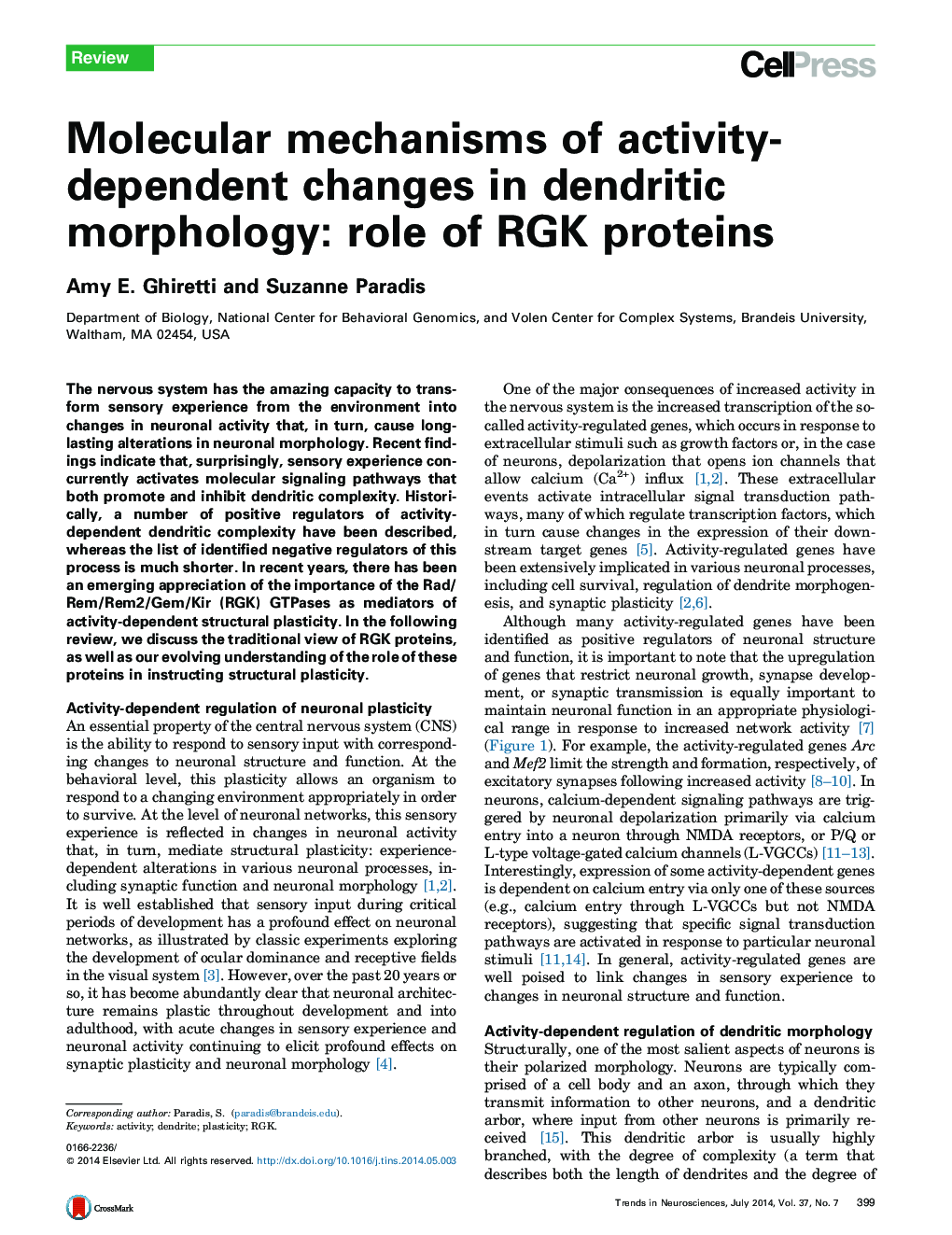| Article ID | Journal | Published Year | Pages | File Type |
|---|---|---|---|---|
| 4354267 | Trends in Neurosciences | 2014 | 9 Pages |
•Dendritic morphology is dynamic and regulated in part by neuronal activity.•Positive and negative molecular regulators contribute to activity-mediated morphology.•The identification of molecular regulators of morphology is a major research area.•RGK proteins have recently emerged as activity-dependent regulators of morphology.
The nervous system has the amazing capacity to transform sensory experience from the environment into changes in neuronal activity that, in turn, cause long-lasting alterations in neuronal morphology. Recent findings indicate that, surprisingly, sensory experience concurrently activates molecular signaling pathways that both promote and inhibit dendritic complexity. Historically, a number of positive regulators of activity-dependent dendritic complexity have been described, whereas the list of identified negative regulators of this process is much shorter. In recent years, there has been an emerging appreciation of the importance of the Rad/Rem/Rem2/Gem/Kir (RGK) GTPases as mediators of activity-dependent structural plasticity. In the following review, we discuss the traditional view of RGK proteins, as well as our evolving understanding of the role of these proteins in instructing structural plasticity.
